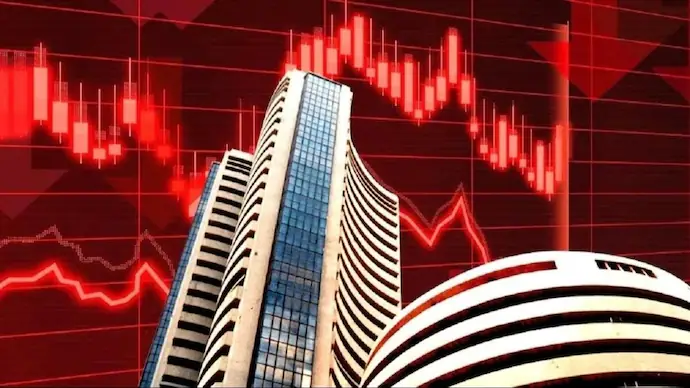The stock market crash on Monday saw benchmark indices nosedive, with the Sensex plunging over 1,100 points and the Nifty falling more than 300 points. This sharp decline wiped out approximately ₹13 lakh crore in investor wealth, as widespread selling gripped Dalal Street during the afternoon trading session.
At 2:50 PM, the Sensex was down 1,041.18 points, trading at 76,337.73, while the NSE Nifty50 dropped 329.70 points to 23,101.80. All broader market indices also traded in negative territory, with Nifty Realty, Nifty Auto, and Nifty Metal leading the losses. Banking, financial, and IT stocks were the major contributors to the market downturn, with HDFC Bank and ICICI Bank among the top laggards.
Key Factors Behind The Stock Market Crash
The dismal performance of the Indian stock market today can be attributed to a combination of global and domestic factors that significantly dampened investor sentiment.
US Economic Data And Its Impact
The US jobs report for December, revealing an addition of 2.56 lakh jobs, has lowered expectations of multiple rate cuts by the US Federal Reserve in 2025. This shift in the US economic outlook has strengthened the dollar and put pressure on emerging market currencies, including the Indian rupee, which hit a record low of 86.39 against the dollar.
Rising Crude Oil Prices
Brent crude oil prices surged past $81 per barrel, reigniting concerns over inflation. Higher crude prices directly impact input costs and consumer inflation in India, leading to a cautious outlook among investors.
Foreign Institutional Investor (FII) Outflows
FIIs have been consistent sellers in the Indian equity market, pulling out over $4 billion this month alone. In the previous quarter, the outflows were even higher at $11 billion. The ongoing sell-off by FIIs, triggered by global uncertainties and the US dollar’s strength, has put immense pressure on Indian equities.
Sectoral Weakness
Major sectors such as banking, finance, IT, and realty saw significant selling pressure. Nifty Realty declined by nearly 6%, while Nifty Auto and Nifty Metal also posted steep losses. The broader market weakness reflects the overall negative sentiment gripping investors.

Investor Sentiment Dampened By Global And Domestic Uncertainties
VK Vijayakumar, Chief Investment Strategist at Geojit Financial Services, noted that global macroeconomic challenges and the shift in US monetary policy expectations are creating headwinds for emerging markets. The stronger US dollar and rising inflation concerns are key factors behind the bearish sentiment.
Additionally, the uncertainty surrounding US monetary policy and the economic strategies of President-elect Donald Trump has further weighed on global markets. Indian equities, heavily influenced by foreign capital flows, remain vulnerable to these external pressures.

Resilience Of Domestic Institutional Investors (DIIs)
While FIIs continue to sell, Domestic Institutional Investors (DIIs) have been buying, providing some support to the market. On Friday, DIIs purchased shares worth ₹3,961.92 crore, offsetting a portion of the FII selling pressure. However, the scale of FII outflows has overshadowed DII contributions, exacerbating market volatility.
Short-Term Market Outlook
As volatility continues to dominate, analysts predict that the bearish trend could persist in the short term. The following factors are expected to influence market performance in the coming months:
- Global Macroeconomic Environment: Rising crude prices, inflation concerns, and US monetary policy will remain key determinants of market sentiment.
- FII Activity: Continued foreign outflows are likely to weigh on Indian equities until global uncertainties stabilize.
- Sectoral Performance: While large-cap stocks may face headwinds, small and mid-cap segments could offer better opportunities for investors.
According to a recent note by Emkay Global, the Nifty is expected to remain subdued in the near term, with a conservative target of 25,000 for 2025. However, the note highlighted the potential for outperformance in small and mid-cap stocks, offering a glimmer of hope for investors seeking value beyond large-cap indices.
What Lies Ahead For Investors?
Amid the current volatility, experts recommend a cautious approach. Investors should focus on sectors with strong fundamentals and long-term growth potential while avoiding excessive exposure to high-risk segments.
The Indian stock market, though under pressure, remains resilient in the face of challenges. As FII selling subsides and earnings outlooks improve, a recovery could be on the horizon in the medium to long term.
The stock market crash on Monday underscores the interplay of global and domestic factors impacting Indian equities. While the short-term outlook remains uncertain, growth opportunities persist in select sectors, offering hope for a market rebound in the months ahead.

